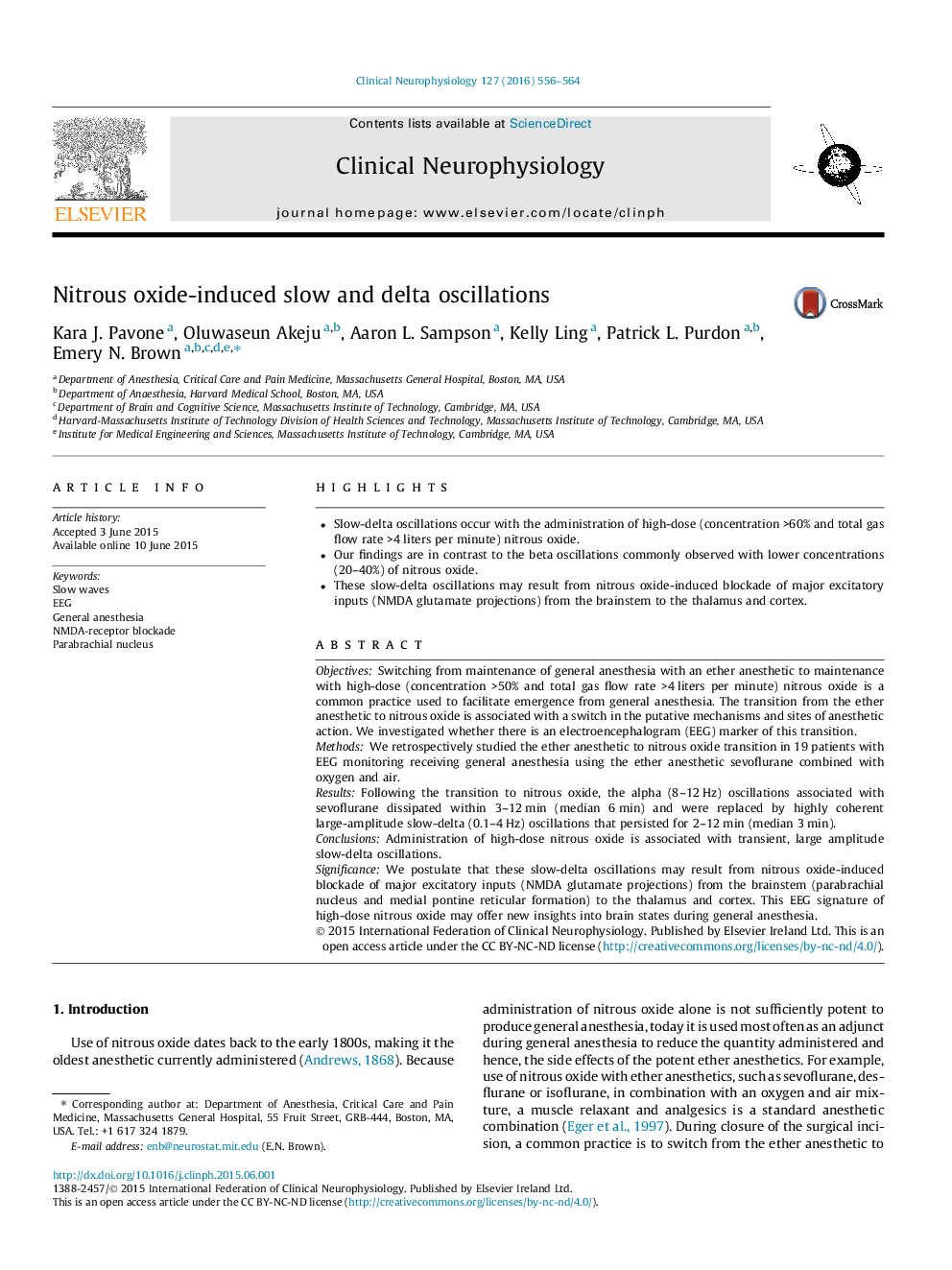| Article ID | Journal | Published Year | Pages | File Type |
|---|---|---|---|---|
| 6007929 | Clinical Neurophysiology | 2016 | 9 Pages |
â¢Slow-delta oscillations occur with the administration of high-dose (concentration >60% and total gas flow rate >4 liters per minute) nitrous oxide.â¢Our findings are in contrast to the beta oscillations commonly observed with lower concentrations (20-40%) of nitrous oxide.â¢These slow-delta oscillations may result from nitrous oxide-induced blockade of major excitatory inputs (NMDA glutamate projections) from the brainstem to the thalamus and cortex.
ObjectivesSwitching from maintenance of general anesthesia with an ether anesthetic to maintenance with high-dose (concentration >50% and total gas flow rate >4Â liters per minute) nitrous oxide is a common practice used to facilitate emergence from general anesthesia. The transition from the ether anesthetic to nitrous oxide is associated with a switch in the putative mechanisms and sites of anesthetic action. We investigated whether there is an electroencephalogram (EEG) marker of this transition.MethodsWe retrospectively studied the ether anesthetic to nitrous oxide transition in 19 patients with EEG monitoring receiving general anesthesia using the ether anesthetic sevoflurane combined with oxygen and air.ResultsFollowing the transition to nitrous oxide, the alpha (8-12Â Hz) oscillations associated with sevoflurane dissipated within 3-12Â min (median 6Â min) and were replaced by highly coherent large-amplitude slow-delta (0.1-4Â Hz) oscillations that persisted for 2-12Â min (median 3Â min).ConclusionsAdministration of high-dose nitrous oxide is associated with transient, large amplitude slow-delta oscillations.SignificanceWe postulate that these slow-delta oscillations may result from nitrous oxide-induced blockade of major excitatory inputs (NMDA glutamate projections) from the brainstem (parabrachial nucleus and medial pontine reticular formation) to the thalamus and cortex. This EEG signature of high-dose nitrous oxide may offer new insights into brain states during general anesthesia.
